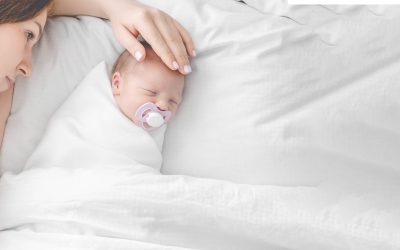Newborn Baby Rash 101
When babies are born, parents often expect they will come out with perfect skin. It is rarely the case that a newborn will come into this world with flawless skin. Baby has been through a lot!
During labor, babies are upside down, with blood pooling by their faces. They are squeezed through the birthing track and often manipulated out by your doctor or midwife.
In utero, many babies have long nails, and they may scratch their face. While some babies come out looking pristine, most look somewhat bruised and battered!
Parents often seek advice about rashes or skin changes their babies are born with or develop in the first few weeks or months of life. Rashes commonly cause stress for parents, as we want our kids to have flawless skin!
Parents often seek advice about rashes or skin changes their babies are born with or develop in the first few weeks or months of life. Rashes commonly cause stress for parents, as we want our kids to have flawless skin!
Here we will review the most common rashes we see in the newborn and young-baby stages. If you have any concerns about a rash your baby has, please check with your healthcare provider.
Neonatal Acne (or Baby Acne)
Baby acne is a temporary skin condition that usually develops on a baby’s face. It looks like tiny red or white bumps or pimples. These newborn rashes occur in about 20 percent of infants. Baby acne only occurs in the first few months of life. While you might be tempted to pop the pimples or apply a cream to clear the rash, we do not recommend you do anything. Please do not ever squeeze your baby’s skin.
Baby skin is very delicate and vulnerable to pressure and friction. Squeezing a pimple may not seem like a big deal for your skin, but this can damage their skin or cause infection or scarring.
Many parents ask me if I recommend applying breast milk to baby acne. I do not.
Breast milk has plenty of healthy bacteria and anti-inflammatory properties, FOR THE GUT. Not for the face. Putting breast milk on the face can cause dryness or evening worsening rash. Leave the breast milk for the gastrointestinal tract.
In most cases, baby acne resolves on its own without treatment.
Stork Bite
A stork bite, also known as a salmon patch or angel kisses, is a light pink- to red-colored flat birthmark that appears in 30% of newborn babies. The medical term is nevus simplex A, and they are caused by irregular blood vessels underneath the skin. It may become more prominent when a child cries or has a fever.
Stork bites are most commonly found on the face, head, and neck. The most common places are on the forehead, eyelids, nose, upper lip, and back of the neck.
No specific testing needs to be completed as a physician can determine whether your child has a stork bite just by looking at it.
Mongolian spots
Mongolian spots (or Slate Gray Nevi) are very common birthmarks. They are most often found on dark skin, where there is more melanin (the pigment that makes skin darker). They are flat, brown/blueish, and Mongolian spots often look like a bruise. They are caused by pigment that didn’t come to the top layer when the baby’s skin was formed. Mongolian spots typically resolve over time and do not require any treatment.
Erythema toxicum
Erythema toxicum neonatorum is one of the most common rashes in newborns. It appears in up to half of newborns and starts within three days of birth. It looks like blotches of red, occasionally with a white pimple-like center. It looks similar to hives (urticaria) but is not itchy. The rash can look intense, but it is not bothersome for your baby. Erythema toxicum usually resolves within a week of birth and requires no treatment.
Milia
Milia are small white bumps that appear on the skin.
Milia are usually grouped on the nose, cheeks, and chin, though they may occur elsewhere. They develop when keratin builds up under the skin and gets trapped under the surface.
This rash will resolve on its own without treatment. Please do not squeeze or pole milia, as this can cause more damage to the skin.
Diaper rash
Diaper rash is inevitable for most babies at some point in their young lives. The diaper area is wet, and there is contact with urine and stool. These act as irritants to the baby’s delicate skin.
It is nearly impossible to eliminate the risk a diaper rash will ever occur, but you can prevent diaper rash with a few simple tips.
Prevention Tips for Diaper Rash
- The best method to avoid diaper rashes is to change your baby’s diaper regularly. This is especially true when they are stooling frequently or lying in the same diaper for long stretches (such as at night).
- Applying a petroleum or non-petroleum jelly or zinc oxide cream as a barrier can prevent stool and urine contact with the skin.
- Leave the diaper off sometimes. This allows the skin to dry and can also help prevent and treat irritation. Some research demonstrates that babies who wear cloth diapers instead of disposable diapers are more likely to get diaper rashes. Cloth diapers are not as absorbent as disposable diapers.
- Babies who wear cloth diapers may avoid rashes by wearing disposable diapers, mainly when sleeping for long periods without diaper changes.
If your baby has a persistent or worsening diaper rash, please see your doctor to ensure no other medications are required.
Read more on how to treat other baby rashes like eczema.
Jaundice
Jaundice is a yellow discoloration of the skin and the white area of the eyes. Jaundice in babies is caused by excessive bilirubin, a product of the breakdown of red blood cells. We usually see jaundice in babies first in the whites of babies’ eyes. As the bilirubin level rises, we see the yellow moving down the body from the head to the toes.
Usually, jaundice in babies appears within the first 24 hours of life, peaking 3 to 5 days after birth. Then it decreases over the next two weeks.
More than half of newborns develop jaundice shortly after birth, but only 2% will have high and dangerous levels. If bilirubin levels go too high, it can be toxic to the brain.
The American Academy of Pediatrics and the Canadian Pediatric Society recommend all babies are assessed within three days of birth with a bilirubin blood test or a transcutaneous measurement. Your doctor or midwife can then decide if the bilirubin level is high enough to require treatment.
If your newborn has become jaundice in the first 24 hours, is not feeding well, or peeing or stooling enough, or if your baby has lethargy or fever, please contact your healthcare provider immediately or go to the emergency room.
Most babies develop uncomplicated jaundice due to relative dehydration after birth. This is called breastfeeding jaundice. If the baby is formula-fed, jaundice will decrease as the baby takes milk and voids and stools. If the baby is breastfeeding, as mom’s milk comes in, the baby usually gets more milk, and jaundice fades.
Jaundice treatment for babiesJaundice in babies does not commonly require treatment. Newborn jaundice usually self-resolves if the baby is drinking, voiding, and stooling well.
If the bilirubin level is too high, babies require therapy with special lights called phototherapy lights to decrease the bilirubin level. A small percentage of babies will need a blood transfusion if the bilirubin level remains very high or does not respond to the phototherapy lights. Ensuring the baby is drinking enough, whether through breast or bottle feeding, is essential.
Rest assured that if jaundice is detected and treated early, most babies will thrive and develop naturally.
If your baby has a rash that you are unsure of, please touch base with your healthcare provider. Your doctor can let you know what the diagnosis is and how best to manage it.











